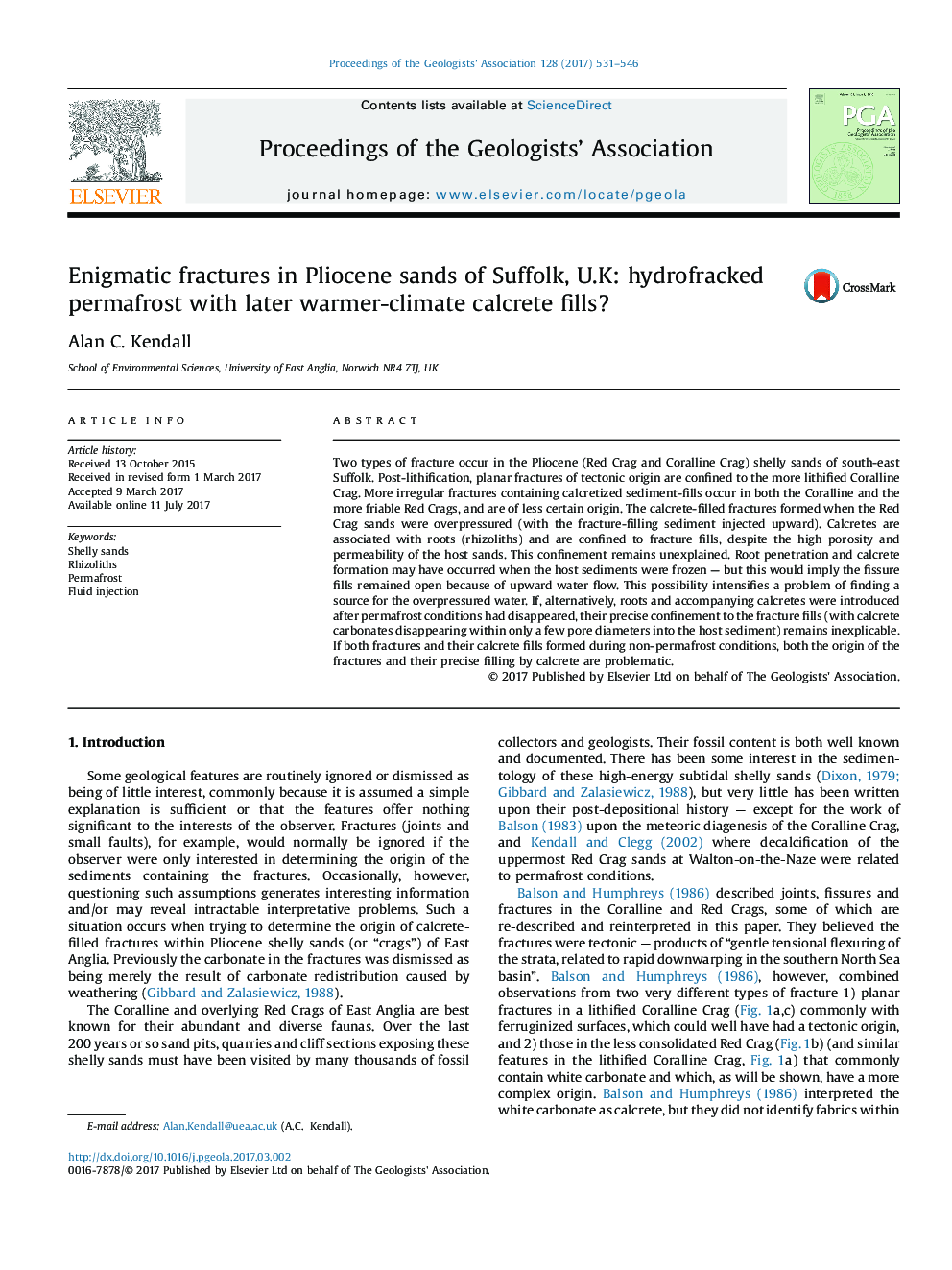| Article ID | Journal | Published Year | Pages | File Type |
|---|---|---|---|---|
| 5786397 | Proceedings of the Geologists' Association | 2017 | 16 Pages |
Two types of fracture occur in the Pliocene (Red Crag and Coralline Crag) shelly sands of south-east Suffolk. Post-lithification, planar fractures of tectonic origin are confined to the more lithified Coralline Crag. More irregular fractures containing calcretized sediment-fills occur in both the Coralline and the more friable Red Crags, and are of less certain origin. The calcrete-filled fractures formed when the Red Crag sands were overpressured (with the fracture-filling sediment injected upward). Calcretes are associated with roots (rhizoliths) and are confined to fracture fills, despite the high porosity and permeability of the host sands. This confinement remains unexplained. Root penetration and calcrete formation may have occurred when the host sediments were frozen - but this would imply the fissure fills remained open because of upward water flow. This possibility intensifies a problem of finding a source for the overpressured water. If, alternatively, roots and accompanying calcretes were introduced after permafrost conditions had disappeared, their precise confinement to the fracture fills (with calcrete carbonates disappearing within only a few pore diameters into the host sediment) remains inexplicable. If both fractures and their calcrete fills formed during non-permafrost conditions, both the origin of the fractures and their precise filling by calcrete are problematic.
